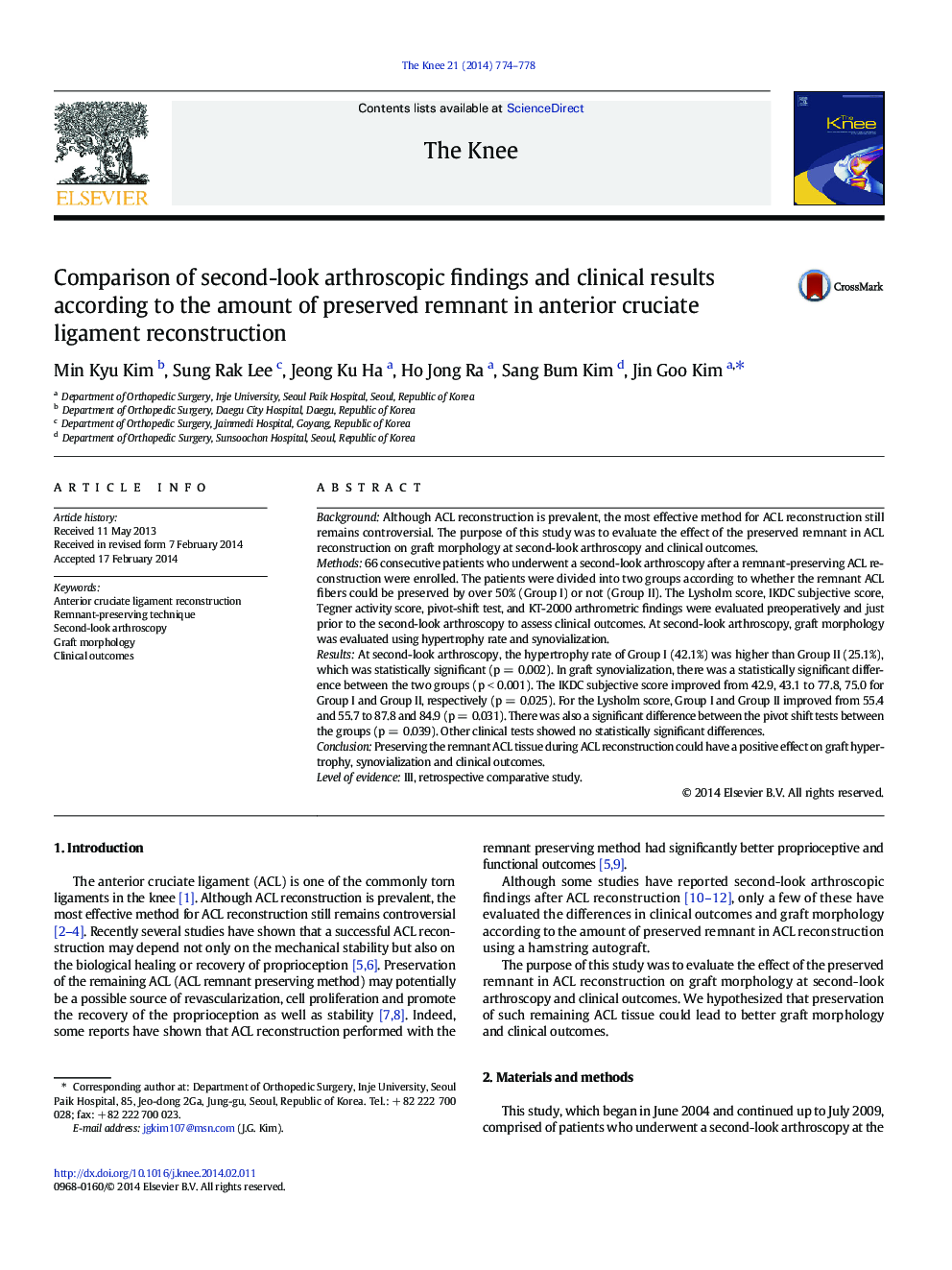| Article ID | Journal | Published Year | Pages | File Type |
|---|---|---|---|---|
| 4077473 | The Knee | 2014 | 5 Pages |
BackgroundAlthough ACL reconstruction is prevalent, the most effective method for ACL reconstruction still remains controversial. The purpose of this study was to evaluate the effect of the preserved remnant in ACL reconstruction on graft morphology at second-look arthroscopy and clinical outcomes.Methods66 consecutive patients who underwent a second-look arthroscopy after a remnant-preserving ACL reconstruction were enrolled. The patients were divided into two groups according to whether the remnant ACL fibers could be preserved by over 50% (Group I) or not (Group II). The Lysholm score, IKDC subjective score, Tegner activity score, pivot-shift test, and KT-2000 arthrometric findings were evaluated preoperatively and just prior to the second-look arthroscopy to assess clinical outcomes. At second-look arthroscopy, graft morphology was evaluated using hypertrophy rate and synovialization.ResultsAt second-look arthroscopy, the hypertrophy rate of Group I (42.1%) was higher than Group II (25.1%), which was statistically significant (p = 0.002). In graft synovialization, there was a statistically significant difference between the two groups (p < 0.001). The IKDC subjective score improved from 42.9, 43.1 to 77.8, 75.0 for Group I and Group II, respectively (p = 0.025). For the Lysholm score, Group I and Group II improved from 55.4 and 55.7 to 87.8 and 84.9 (p = 0.031). There was also a significant difference between the pivot shift tests between the groups (p = 0.039). Other clinical tests showed no statistically significant differences.ConclusionPreserving the remnant ACL tissue during ACL reconstruction could have a positive effect on graft hypertrophy, synovialization and clinical outcomes.Level of evidenceIII, retrospective comparative study.
